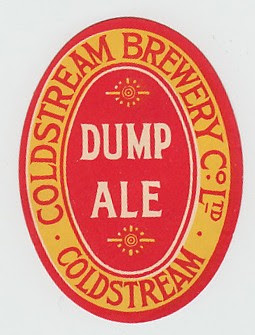Let's take a look at how the process worked in the late 19th century.
"It is usual to dry-hop the casks before filling, this preventing much frothing that would otherwise occur, although it necessitates a second topping over of beer, the dry hops absorbing a great deal of moisture. A certain amount of care is necessary in selecting hops for this purpose; they should be large, well matured, free from leaf, rich in condition, and of undoubted soundness, the twigs exhibiting the absence of mould, even when they are steeped in water, and the water examined microscopically."
"The Theory and Practice of Modern Brewing" by Frank Faulkner, 1888, page 227.
Obviously, you wouldn't use mouldy old hops or the purpose. That would just be asking for trouble.
Though it seems that not all brewers were keen on using whole hops, worrying about the clarity of their beer. Instead, they used lupulin.
"Some brewers object to the use of hops, saying that if beer becomes brisk, annoyance is experienced by the publican on account of minute fragments of flower or leaf floating about in the otherwise decently bright beer; but my own impression is, that if we investigate the exact composition of the so-called particles of hops, we shall find that instead of being so, the particles consist of conglomerated yeast cells. If brewers do experience such difficulty, it is quite easy to use a small quantity of lupulin for the purpose of hopping down, which they can procure for themselves by gently rubbing down the flower of hops upon a fine sieve."
"The Theory and Practice of Modern Brewing" by Frank Faulkner, 1888, pages 227-228.
Dr hops could produce cloudiness. Orr even turn a beer grey.
"Some little care is necessary in order to prevent cloudiness of beer through the over-use of new hops in cask, such variety yielding a very oleaginous extract for which no proper solvent exists in beer until ethereal products result from slow fermentation in cask.
I dare say most of my readers have noticed the peculiar grey shade that hangs upon heavily hopped pale beers during preliminary stages of storage, this seeming to be due to a larger quantity of oil existing than can be held in perfect solution by the small proportion of solid extract existing after fermentation; and this fact shows us that in spite of the strongly-marked antiseptic and protective agency of lupulin, or the condition of the hop-flower, in spite of the aid of hop-tannin, at the time of artificial fining it is undoubtedly a great mistake to over-hop running beers that are expected to be perfectly brilliant soon after being placed in the cellar of the publican; while it is just as necessary to heavily hop down stock and export beers that have to keep for prolonged periods of time."
"The Theory and Practice of Modern Brewing" by Frank Faulkner, 1888, page 228.
What a surprise. Running beers didn't need many dry hops. While beers to be stored a long time before sale needed loads.
Finally, some recommended dry-hopping rates:
"The quantity of hops usually employed for dry-hopping amounts to some 0.25lb. per barrel for beers of 20 to 22 grav.[1056-1061°], 0.5lb. from 22 to 26 [1061-1072°] , 0.75lb. to 1lb. for heavy beers ranking upwards from 27 [1072°]."
"The Theory and Practice of Modern Brewing" by Frank Faulkner, 1888, pages 228-229.
Wasn't that fun? Not really, I suppose. At least for anyone other than me.











































































No comments:
Post a Comment